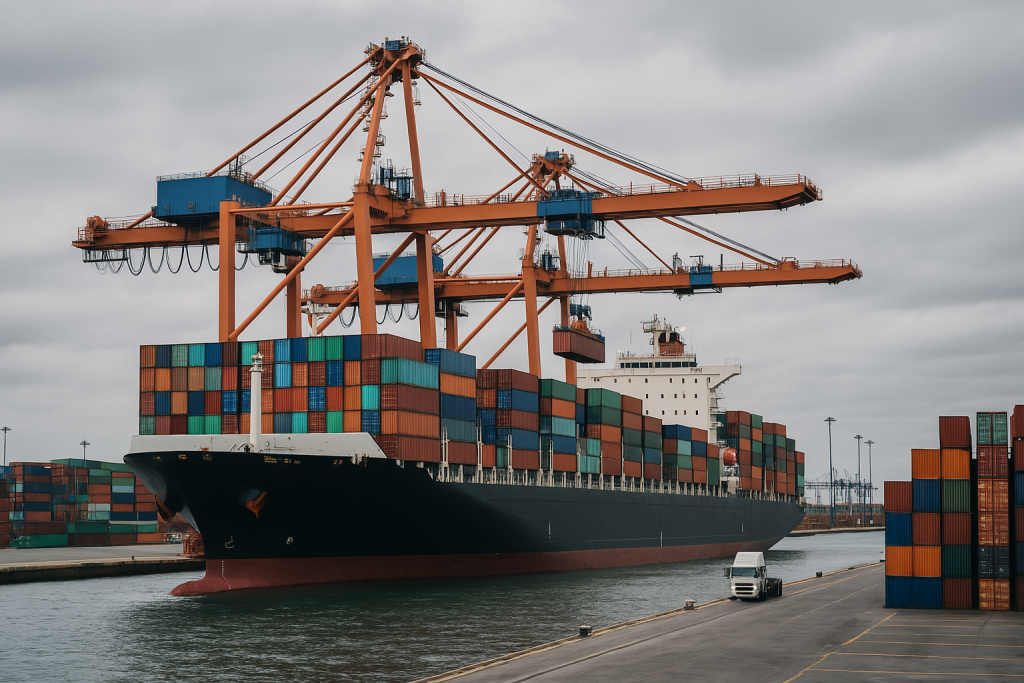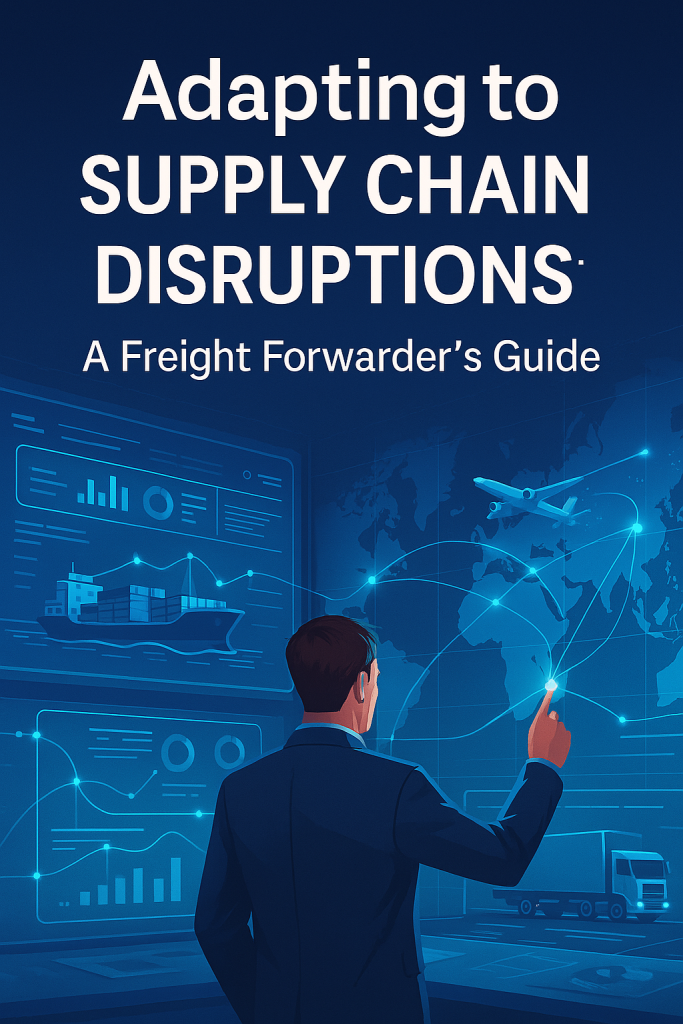Adapting to Supply Chain Disruptions: A Freight Forwarder's Guide
For freight forwarders, these disruptions can cause delays, cost overruns, lost clients, and regulatory headaches. But with the right strategies — and smart use of technology — you can turn disruption into opportunity.

🚨 Understanding the Most Common Supply Chain Disruptions
Supply chain issues can be sudden or slow-burning, but all affect freight movement. Here are the most common causes:
- Port congestion
Long wait times for vessel unloading, especially during peak seasons. - Weather events
Hurricanes, snowstorms, and floods continue to impact schedules. - Labor shortages and strikes
Delays at ports, warehouses, or during inland transport. - Geopolitical instability
Trade sanctions, route closures, or customs slowdowns. - Equipment shortages
Lack of containers, chassis, or vessels in key regions.
Understanding these triggers is the first step toward building a proactive response.

🧭 Step-by-Step: How Freight Forwarders Can Respond Effectively
1. Monitor in Real Time
Use software tools that offer:
- Live tracking of cargo
- Port and weather alerts
- Predictive ETAs
📡 With real-time visibility, you can reroute or notify customers instantly.
2. Build Flexible Carrier Networks
Diversify your carrier partnerships across:
- Ocean, air, and land
- Regional vs. global providers
- Capacity-based relationships
🚛 Flexibility allows you to shift when one route or carrier becomes unavailable.
3. Automate Communication with Clients
Use freight software to automate:
- Delay notifications
- Updated delivery estimates
- Document requests
📨 Keeping clients informed builds trust — even during disruptions.
4. Strengthen Risk Planning
Prepare contingency plans for high-risk regions and seasons. Identify:
- Alternate ports
- Emergency carriers
- Buffer inventory strategies
📋 Scenario planning helps mitigate losses when things go off-track.
5. Use Data to Learn and Improve
Track your disruption patterns:
- Which routes are most delayed?
- Which carriers are most reliable?
- What’s the average recovery time?
📊 Data helps you make smarter decisions in future disruptions.

🛠 How Freight Software Helps
Digital freight platforms play a crucial role in handling disruptions:
- End-to-end visibility
- Automated alerts & workflows
- Integrated communication tools
- Analytics dashboards for disruption patterns
These features allow freight forwarders to react faster and reduce the impact of disruptions — improving both customer service and profit margins.
✅ Key Takeaways
To stay competitive, freight forwarders must become resilient, flexible, and proactive. By embracing tech, building smarter networks, and automating response strategies, you can turn chaos into continuity.
Disruptions are inevitable — but unpreparedness doesn’t have to be

🧩 Conclusion: From Reactive to Resilient Freight Forwarding
Supply chain disruptions aren’t going away — they’re becoming a permanent feature of global logistics. For freight forwarders, this means the old ways of working — reactive calls, paper-based tracking, and siloed systems — no longer cut it.
In 2025 and beyond, success belongs to the forwarders who embrace digital tools, data-driven decisions, and agile processes. Whether it’s using predictive logistics, automating client communications, or diversifying your carrier strategy, the goal is clear: resilience through visibility and preparedness.
Freight forwarders who adapt to uncertainty not only survive disruptions — they thrive because of them. 🌐🚢📦
